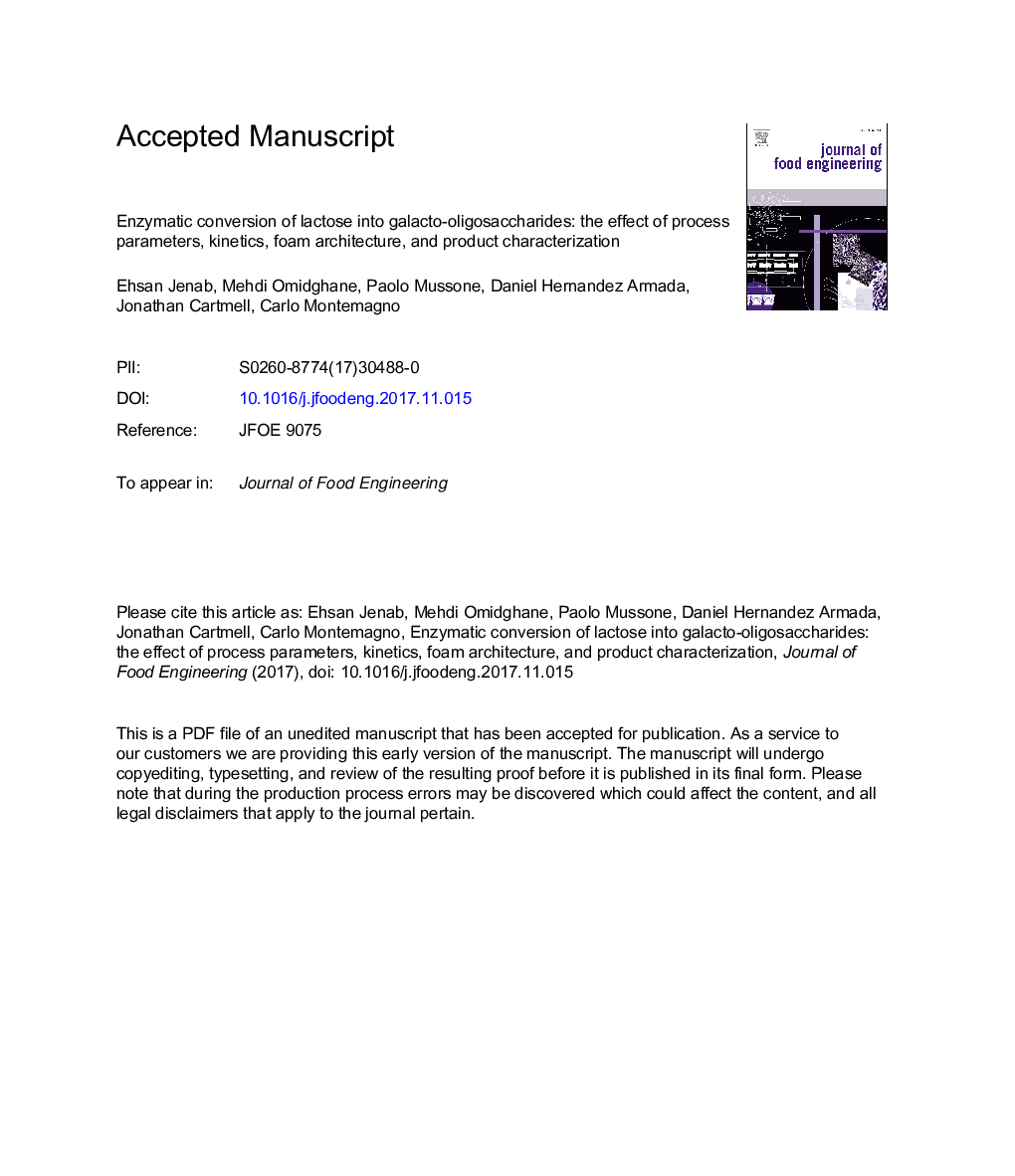| Article ID | Journal | Published Year | Pages | File Type |
|---|---|---|---|---|
| 6664759 | Journal of Food Engineering | 2018 | 36 Pages |
Abstract
Galacto-oligosaccharides (GOS) synthesized from lactose using Aspergillus oryzae β-galactosidases. We studied the influences of enzyme concentration (0.02-0.1%. w/v), temperature (40-70 °C), pH (4.5-8), lactose concentration (5-40%, w/v) and foam architecture reaction media on formation of GOS. The total GOS increased from about 7 to 23 (wt.% of initial lactose) with an increase in lactose from 5 to 40% (w/v). Trisaccharides were the major GOS accounting for approximately 78% (w/w) of GOS. The developed kinetic model for predicting kinetic parameters using the genetic algorithm of MATLAB Software resulted in good agreement between simulated and experimental data. Conducting the reaction in foam architecture with an initial lactose concentration of 20% (w/v), 0.05% (w/v), 0.05% (w/v) enzyme and 0.02% (w/v) ranaspumin-2 (surfactant) at pH of 4.5 and 45 °C did not have any effect on reaction and conversion efficiency. The structure of the main fractionated trisaccharide determined with NMR was galactose-β (1,6)-galactose-β (1,4)-glucose.
Related Topics
Physical Sciences and Engineering
Chemical Engineering
Chemical Engineering (General)
Authors
Ehsan Jenab, Mehdi Omidghane, Paolo Mussone, Daniel Hernandez Armada, Jonathan Cartmell, Carlo Montemagno,
